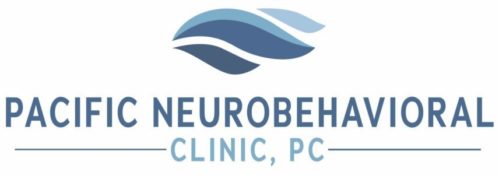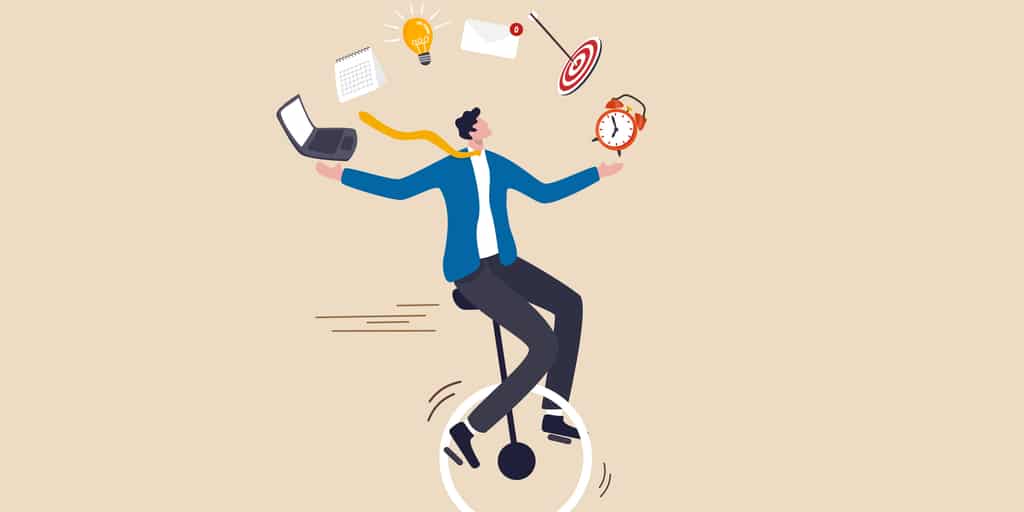Written by Dr. V. John Nguyen
I am not a productivity guru.
As a matter of fact, if you look at my phone, you’ll see a graveyard of productivity apps that were once downloaded with such promise. I also have sticky notes that have fallen to the ground around my desk over the years with things that I never got to. I’ve spent countless hours researching ways to be productive when I could have just been productive (whatever that means). Despite my public confession, I can’t deny the appeal of getting things done and I’ll probably always be attracted to new methods. There’s something oddly satisfying about checking things off a list, even if I went back to add it after I already did it.
The coronavirus pandemic changed the way that we perceive productivity in ways that will likely continue to unfold as we move toward our “new normal.” Early on, many of us took the opportunity to learn a new skill – like baking bread, cutting hair, and making masks. We also got unusually comfortable pairing work shirts with sweatpants but that’s a different discussion for a different day. But when the dust settled, and we realized that we would be in quarantine much longer than we had anticipated, it was time to get back to business. Perhaps during this phase of quarantine, you found it difficult to determine whether you were being “productive” or not. Compartmentalizing work life and home life became challenging because we did everything at home.
What follows are some tips on how to remain productive even if you aren’t sure what it means to be productive.
Try Not to Resist Change
The pandemic has tested our ability to accept change. While resistance can be good at times, it can cause unnecessary challenges in life – especially if it’s our default response to everything (I’m looking in the mirror). Here are some questions that can help you identify resistance and figure out if it’s working for you or not:
- How do you know when you are in resistance?
- Can you describe what is happening when you are resisting an experience?
- Is the resistance benefitting you in any way?
- How might the resistance not be serving you?
Prioritize Quality Over Quantity
Nothing groundbreaking, we hear this all the time. Checking items off a list can be nice but can become a rote exercise in futility if we can’t maintain or improve the quality of our work. Try and focus on the quality of time spent on projects, on interactions with coworkers, and on reaching the standards that you pride yourself on. You may not get the project done as quickly as you wanted but it the final product might better meet your standards (and needs).
Plan For Tasks to Take Longer Than You Think
Inevitably, things come up and derail us from completing tasks. This causes us to fall behind and feel bad that we did. Remember the three P’s: Planning, prioritizing, and pacing your activities. Planning can prevent you from putting too much on your plate at once while ignoring the possibility that something will come up. Prioritizing can give you an idea of what needs to be done today and what can be either pushed to tomorrow or even eliminated. Pacing can allow you to complete tasks without becoming physically and emotionally exhausted. It may seem like you’re doing less than you were able to because of frequent breaks, but you may find that you’re getting more done overall. Your energy level and productivity will become more predictable and thus more under your control.
Set Clear (and Realistic) Boundaries
Working from home blurs the lines between work life and home life. Creating boundaries involves designating both physical and mental spaces to complete your work. Scheduling blocks of time for certain tasks may be helpful in compartmentalizing your life even if you’re doing it in the same space. Adjust your boundaries as you see fit and do your best to adhere to them. You may be surprised at how well the people around you respond to your boundaries and how much you can get done.
Consider Self-Care Productive Time
Plan and engage in activities that promote self-care. This may take some time to get used to but consider self-care activities “productive.” These activities may not be related to the tasks in front of you but being in an improved state of mind can certainly improve the quality of your work – and who knows, might even make it enjoyable. Being in a better mood can also enhance your ability to problem solve and shift your attention away from the negative aspects of your day (beneficial during the daily reviews you conduct as soon as your head hits the pillow).
Focus On What Has Been Done vs. What Hasn’t Been Done
Focusing on what hasn’t been done might be your default setting. You may find yourself setting goals for the day, reaching them, and then adding new goals to your list. While this is consistent with today’s “hustle culture” mentality, it creates a never ending to do list. What tends to happen is, you’ll remember what you haven’t finished and forget about what you did finish.
Keep Things Simple
Don’t be like me. Keeping your productivity system simple will increase the likelihood that you’ll keep doing it. Try not to overthink things and focus on what it is that you’re trying to get done. Do you really need 20 apps to light up your phone with notifications to remind you to take your vitamins?
Here are some fairly simple productivity systems that you might find helpful:
The Getting Things Done Method
The Getting Things Done Method (GTD) was developed by productivity and organizational consultant David Allen in 2001. This method involves 5 steps with the goal of “applying order to chaos.” The steps are as follows:
- Capture: Collect what has your attention. Write, record, or gather all everything that has your attention into a collection tool. A collection tool could be a notebook, fancy notetaking app, or a wide array of colorful sticky notes.
- Clarify: Look at your notes and process what they mean. It is at this point that you decide whether the items are actionable. If actionable, decide on the next step(s).
- Organize: Put reminders of your categorized content in the appropriate place, grouping similar tasks together, and scheduling blocks of time to complete them.
- Reflect: Update and review all pertinent system contents to regain control and focus.
- Engage: Take action using the system you just created with confidence and clarity.
The Pomodoro Technique/Time Blocking
The Pomodoro technique is a time management system that encourages you to work with the time that you have, rather than against it. This method simply involves breaking your workday (or activities) into 25-minute chunks (called “Pomodoros”) followed by 5-minute breaks. After the 5-minute break, reset the timer for 25 minutes and start again. After completing four “Pomodoros”, reward yourself with a longer break – usually 15-30 minutes.
Bullet Journaling
Bullet journaling is a highly customizable productivity system that involves keeping and maintaining a single journal that is used to track almost everything in your life – schedule, goals, appointments, events, thoughts, and anything else you might find useful. Journal entries are meant to be simple bullet points with user defined symbols or colors to organize items.
The Daily Trifecta
This system involves creating a list of three key things you want to get done each day by writing them down the night before. This system might be useful if you tend to overload your to-do list. It is also helpful in that it allows you to be realistic about accomplishing the most essential tasks, not every task.
The pandemic forced us into figuring out how to balance our work and home lives. For some of us, there was significant overlap between the two. It forced us to prioritize and change the way we view productive time. If there is a silver lining in this, it’s that the definition of productivity is not entirely dependent on tangible rewards or outcomes. We can still be productive, even when we’re not feverishly crossing off items on a checklist or sacrificing self-care.
References
Curran, E. (2021, April 21). Work from Home to Life Productivity By 5% in Post-Pandemic U.S. Bloomberg.
Hickok, H. (2021, January 7). How The Pandemic Could Redefine Our Productivity Obsession. BBC.
Pontefract, D. (2021, June 4). Productivity Better Be Top Of Mind In Post-Pandemic Work World. Forbes.
Moore, K. (2019, November 12). Six Productivity Systems You Should Know. Monday.
https://monday.com/blog/productivity/6-productivity-systems-know/

